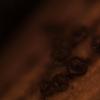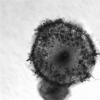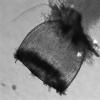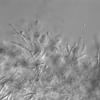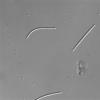
12-11-2025 09:25
 Viktorie Halasu
Viktorie Halasu
Hello, I need help with a pale terrestric Pseudom

11-11-2025 20:16
Bohan JiaHi, lastly I have found these tiny yellow decayin

09-11-2025 13:20
Hello.A tiny ascomycete, appearing as erupting gra

08-11-2025 00:29
 Francois Guay
Francois Guay
I found this species in Quebec, Canada, on herbace
Unusual cupulate coelomycete on Scots Pine needle litter
Joanne Taylor,
23-02-2013 00:20
I have recently found a cupulate coelomycete on Pinus sylvetris (Scots Pine) needle litter
in Wales. It has conidiomata which are immersed at the base and are pale brown
and collapse on drying (50-250um wide), and occur in small groups or singularly.
The conidiomata are flat topped with an ostiole, and a ring of dematiaceous,
blunt, irregular, short 'hairs' around the rim. It produces narrow, cylindrical
phialidic, conidiogenous cells on septate, sometimes slightly swollen conidiophores.
Conidia are hyaline, narrowly cylindrical and non septate (approx. 19 x 1um).
I have had a look at most of literature on cupulate
coelos by Brian Sutton but my specimen does not correspond to anything that I have
looked at. David Minter said it's not Fujimyces, Linodochium hyalinum or L.
formosum, Lemalis aurea. It's not Pseudocenangium succineum. He has never seen
anything like it before or never come across anything like it in the literature,
unless it has been described recently.
Has anyone come across this before??
Thanks,
Jo

